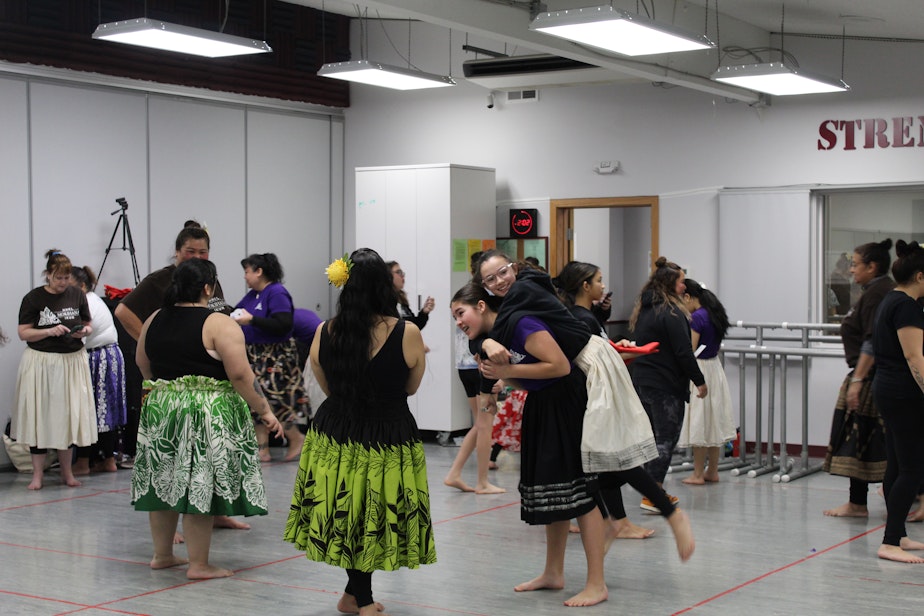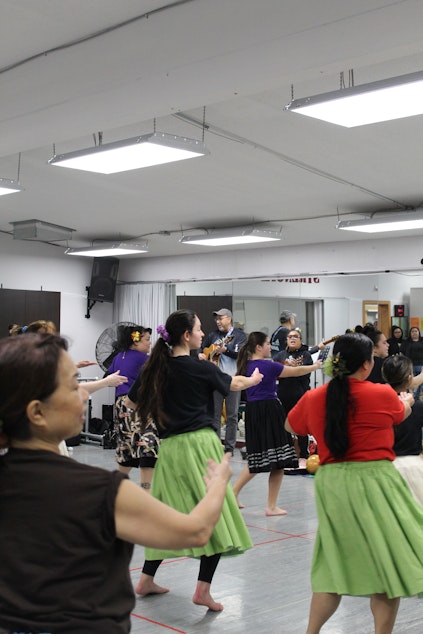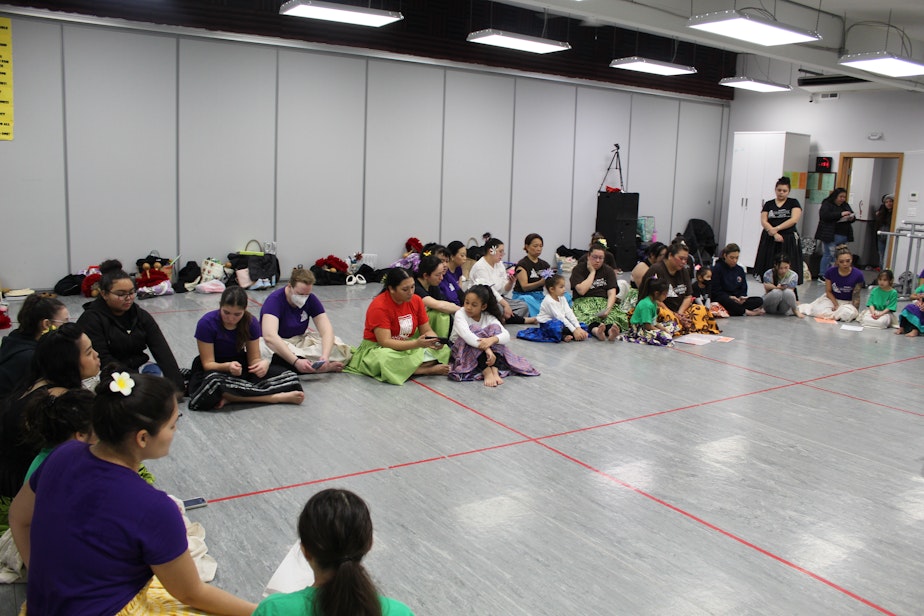How one kumu keeps her hula lineage

When you think of hula, you might picture dances you’ve seen in Disney movies, or on a summer trip to Hawai'i. But that’s just scratching the surface of what hula is. There’s so much more. And RadioActive Youth Media’s Terina Papatu is here to show you.
[RadioActive Youth Media is KUOW's radio journalism and audio storytelling program for young people. This story was entirely youth-produced, from the writing to the audio editing.]
H
ow do you tell stories? A popular way in the Pacific Islands is through dance. Hawaiʻi has hula, there's Siva Samoa, Tongan Lakalaka, 'Ori Tahiti, Fijian Meke — the list of cultural dances goes on and on.
"Every single culture has such a different style," said Mokihana Melendez, a hula teacher, or kumu, here in Washington state. But, she said, "There's similarities when they're doing their specific dances."
Melendez is native Hawaiʻian and has been dancing hula since age 5. The hula she learned and now teaches is the dance of Hawaiʻian hula in the traditional style — graceful, historical, and a way to tell stories without words. (Not like the exercise form of hula you might see on social media, or the bobbleheads on car dashboards.)
"Due to the influence of the internet, like YouTube and TikTok, the perception of hula is sometimes diluted because it has a lot of Western influence," Melendez said.
Sponsored

Melendez teaches hula by keeping a hula lineage, looking toward her kupuna, or ancestors. One of those people is her kumu, Newton Hitchcock, who passed away more than two decades ago.
Hitchcock taught her things in hula that she applies in her everyday life. She said that when she's in a rough spot, she pauses, takes a deep breath, and thinks, "'What would my kupuna do? What would my ancestors do?' They're the ones that laid the path for us. We're just keeping it all intact and carrying on the tradition."
Sponsored
Melendez said Hitchcock taught her so much in such a short time. She is the last student from Hitchcock's hula hālau, or school, who's still dancing the way he taught; keeping his hula legacy is a vital part of her teaching style.
"I carry on his hula lineage," she said. "I find that very sacred. When people disrespect me in hula, they're not disrespecting me, they're disrespecting my kumu. Don't ever disrespect my kumu, because that is a lineage that no one else carries."
At lū‘au, some people may see other Pacific Island dances and assume they're hula. But the stereotypes about how hula looks can be disrespectful to Native Hawaiʻians.
"A lot of people get hula and Tahitian mixed up," Melendez said. "I've actually had people debate with me and try to tell me, 'No, that's hula! They did it at the lūʻau in Hawaiʻi!' Like, I haven't been doing this all 45 years of my life to not tell you, you know what I mean?"

Sponsored
Melendez shows her students and her audience members how her kumu taught her the important aspects of hula — discipline, being humble, and having aloha, or love. Melendez does this by having dancers think about both emotional and technical aspects of the dance.
Melendez continues to carry on the hula legacy in her hālau, which is named Hālau Hula Ka Lei Mokihana I Ka Ua Noe, which means "the lei mokihana in the misty rain." A mokihana lei is a necklace made of the citrus tree native to the island of Kaua'i.
The beauty of hula is its simplicity. The outfits, the songs, the movements — they all sum up to a rich dance, as well as an amazing story.
Sponsored
This story was produced in a RadioActive Youth Media Advanced Producers workshop for high school and college-age youth. Production assistance by Dayana Capulong. Edited by Diana Opong. Consultation support by Ku`uwehi Hiraishi. Prepared for the web by Charlotte Engrav.
Find RadioActive on Instagram, TikTok, YouTube and Facebook, and on the RadioActive podcast.
Support for KUOW's RadioActive comes from the Bill & Melinda Gates Foundation Discovery Center and BECU.



